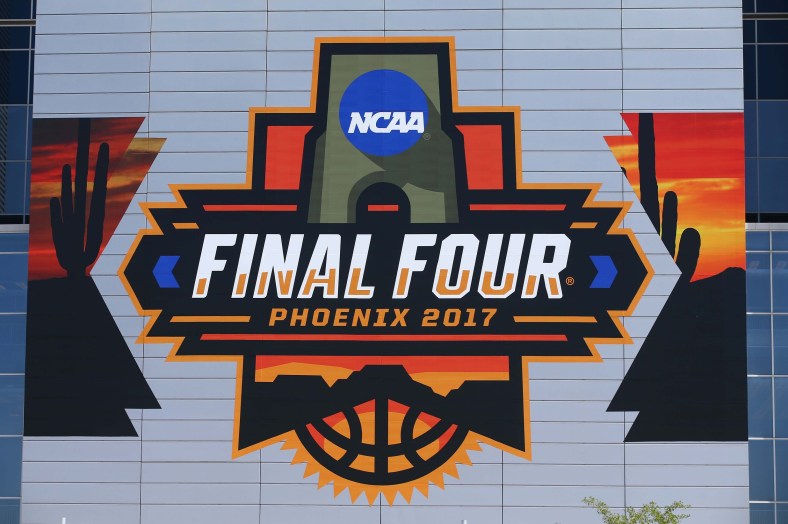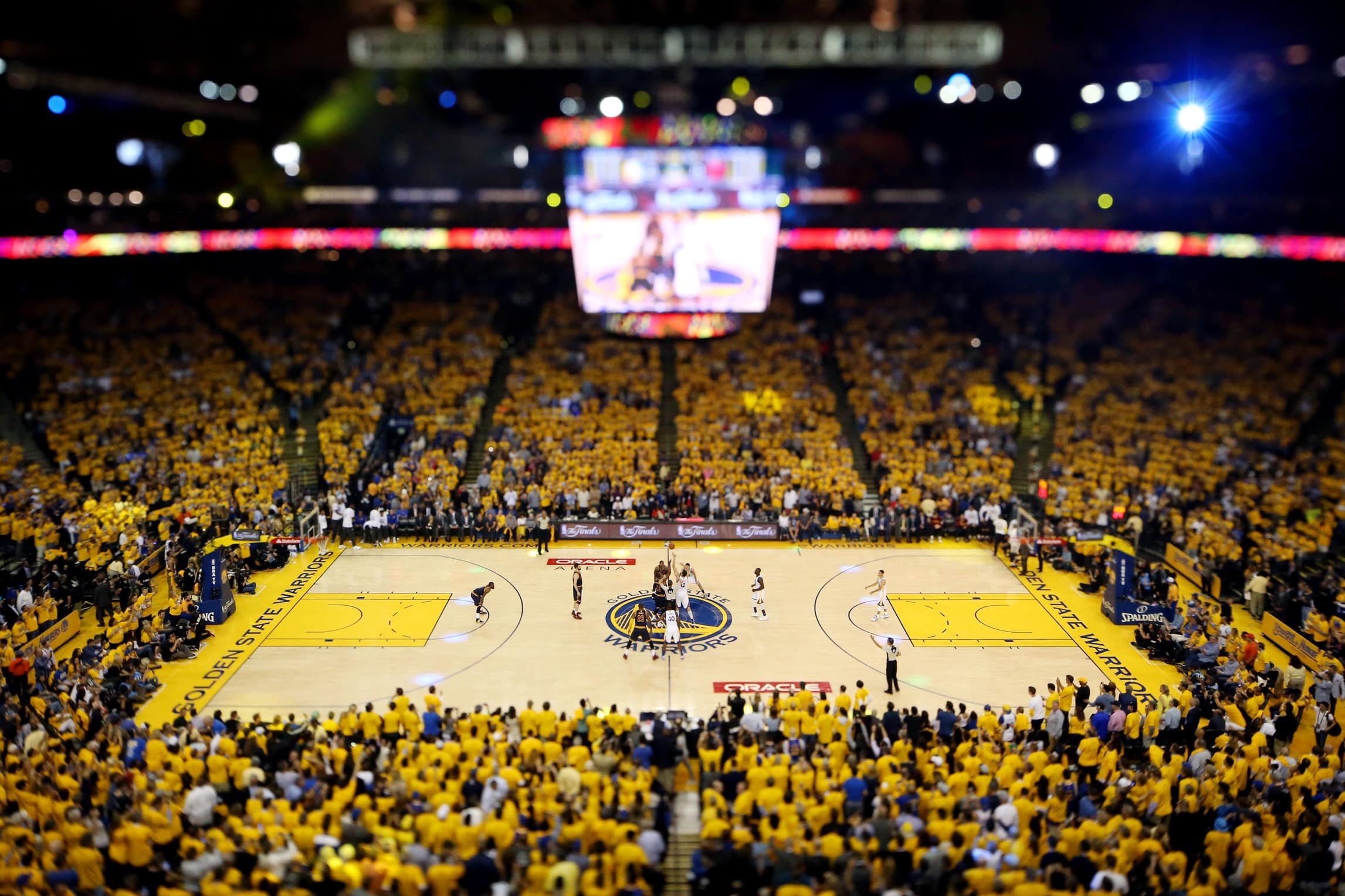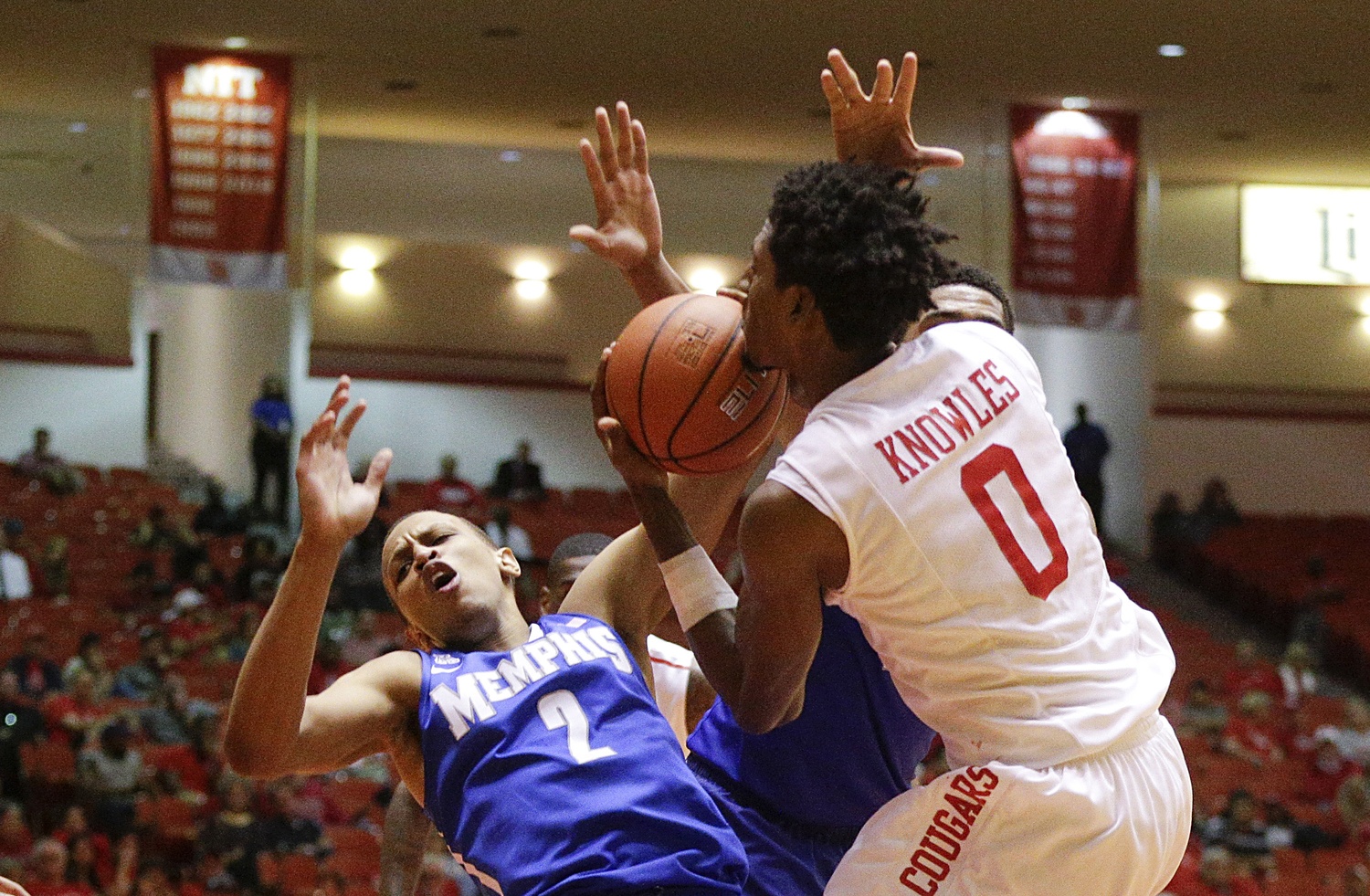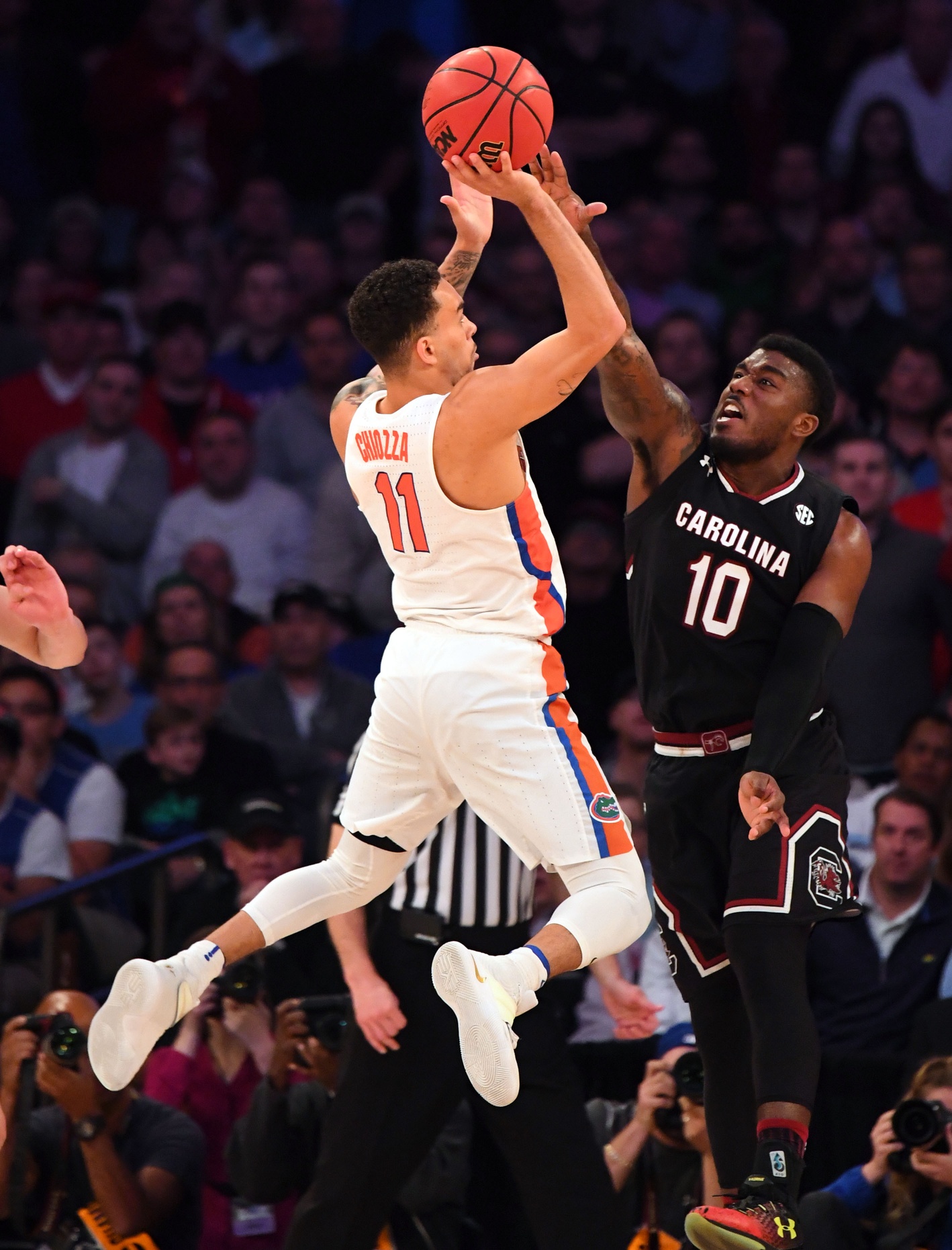
College basketball features some of the most broken, archaic rules in all of sports. As much as we love March Madness, it seems all too often that the referees get in the way of things. The NCAA’s rules seem to be aimed at slowing down the game, stopping offense and creating a worse product as much as anything else.
For example, teams are allowed to station a big man in the paint on defense without guarding anyone. They can call timeouts on defense, get a technical for having fun and have fouls called on them for driving to the basket. Let’s get rid of that and make a better game of basketball.
This list of 15 rule changes aims to get rid of the ones that unnecessarily slow the game down, put offenses at a disadvantage and make a poor viewing experience for fans. College basketball will never be what it was in the 1980’s when players stayed for four years, but it can get close. Consider these changes to be Step 1.
1. Make the shot clock 28 seconds
The ultimate goal here is to eventually get the shot clock to 24 seconds, but we’re willing to take baby steps. There’s too much standing around in college hoops to justify a 30-second shot clock. Each possession seems to start with two or three passes around the perimeter, which accomplish nothing other than wasting seconds, before a team actually gets into a play. Shortening the shot clock will help get rid of that.
The other thing this will do is create more possessions. Right now, the college game has a minimum of 80 possessions. With this change, that goes up to approximately 85 possessions. Five possessions doesn’t seem like a massive change, but it’s the difference between ranking 73rd and 302nd in tempo, per Ken Pom. When teams often struggle to shoot 45 percent from the field and games have more variance than that of the professional variety, five possessions make a massive difference.
2. Extend the 3-point line to NBA boundaries

Perhaps the biggest problem in college basketball right now is an overall lack of spacing. With a 3-point line that doesn’t even reach 21 feet, it’s tough for teams to create adequate space for guards to drive and kick or big men to post up. Why? Players can easily double from the perimeter, knowing that they’ll probably be able to rotate back in time to contest a 3-pointer.
Yes, pushing back the 3-point line will result in worse 3-point shooting. However, it creates much larger incentive for teams that can shoot. Not only are you still getting a more efficient shot, you’re creating much more space. Moreover, this will help players get ready for the next level.
If the NCAA is the de-facto minor league for the NBA (it is), one of its goals should be to prepare players for the NBA, even if the vast majority of players don’t go to the next level. Pushing the 3-point line back is the single most-helpful change they can make in that regard.
3. Ban teams from calling timeout after making baskets and free throws
Here’s a novel idea: defensive teams shouldn’t be able to call timeout. That rule exists at every level of basketball, with one exception. In college, you can call timeout after making a basket or free throw. At this point, you are no longer the offensive team — you call the timeout in order to set your defense.
These timeouts slow down the game and unfairly disadvantage the offense. It’s not much different than being able to call a timeout on a sideline out of bounds after seeing a player slip open under the basket. If anything, rules should promote more scoring to provide a more entertaining product to most fans. Instead, this rule actively helps defenses.
It’s not as if teams can’t set up a press without a timeout, by the way.
Another big problem in the NCAA is overcoaching. Take the end of the West Virginia-Gonzaga game as an example. West Virginia was out of timeouts, meaning the players were on their own at the end of the game. The result was a belching, disgusting attempt at hero-ball, during which the players seemed to have no idea how to conduct themselves. This proposal won’t help teams on the offensive end, but it will help stop overcoaching in general, undoubtedly a good thing.
4. Ban the charge
There’s long been a #BantheCharge movement on NBA Twitter and it’s starting to migrate to the NCAA. And, in all honesty, college basketball needs to get rid of the charge even worse than the NBA.
Teaching young players to try and take charges does two things. First, it discourages them from playing actual defense. Instead of learning to block a shot or combat a drive without fouling, players learn to take a charge. That doesn’t make the game of basketball better and it doesn’t make the player better, so what is the point?
Second, it creates an injury risk. If you’re taking a charge against a big man, you’re allowing a roughly 230 lb man to barrel over you. In this scribe’s unprofessional medical opinion, that is not good for your body.
There isn’t a single logical reason for the charge to exist. So get rid of it.
5. Disallow substitutions after a second made free throw
There’s a time and a place for substitutions and it’s after the first free throw. This seems like a small rule change (and it is), but there are a few reasons why the current rule must be changed.
More periods for substitutions creates slower basketball. Even if a substitution takes just a few seconds, that time adds up. Couple it with TV timeouts, actual timeouts, fouls and other various stoppages and the game itself gets chopped up and hard to watch. Getting rid of whatever unnecessary slowdowns you can helps, no matter how small.
This also comes back around to overcoaching. Late in the game when coaches look for whatever edge they can get, you can see teams responding to the other team’s substitutions after the first free throw. This is unnecessary. Coaches should be capable of making their substitutions after the first free throw.
6. Don’t be as strict calling traveling violations

Just to be clear, we’re not asking for an NBA-style relaxation of traveling, where the rule barely exists. The rule is there for a reason and should be enforced.
However, it exists to an extreme in the NCAA. When a player’s driving, maybe turn a blind eye to a third step once in a while. When a player’s trying to establish position in the post, maybe the ref shouldn’t train his eyes on the player’s feet. And late in games, maybe we should let the players play.
The extreme to which traveling is called in college basketball is borderline absurd. It creates a slower game, less scoring and allows too many games to be decided by the men in stripes. In other words, all of the things that we hate about sports — and there aren’t many — are encompassed in the way the NCAA enforces traveling.
7. Get rid of push-off fouls and other offensive fouls
An offensive player should be able to use his body to help get to the basket or create a shot. That, however, is currently not allowed in college basketball.
If a player creates space for a shot by pushing off a defensive player, it is currently a foul. If a player uses his elbow to help guard the ball on his way to the basket, it is also a foul. These rules are outdated — they reek of a time when we refused to acknowledge that basketball is a contact sport — and should be repealed from the books permanently. There is no reason that sort of contact should be deemed excessive enough for a foul, let alone illegal.
Again, these rules create less scoring, more stoppages and lead to players sitting on the bench in foul trouble because they tried to score. It’s not radical to say that a player shouldn’t be punished for attempting to put the ball in the net, but that’s just what this set of rules does. They don’t make the players safer — basketball is a contact sport — and they sure as hell don’t make the game more entertaining. So we ask, what is the point of these rules being in place?
8. Create a centralized replay center
We’ve all been treated to a slew of five-minute sagas — referees standing at the monitor along with a couple game-deciding missed calls to boot. It’ll be hard to find someone who opposes this.
Despite logistical problems that will result from many games being played at once on Saturday afternoons, a replay center will still speed things up and get calls right. Replay centers aren’t perfect, but have undoubtedly helped in the NBA, NFL, MLB and NHL. Heck, the NFL just voted to centralize all replays to its New York offices.
There’s no reason college sports shouldn’t be next.
Missed calls should never decide games. Likewise, it shouldn’t take five minutes to get an easy call right. A replay center solves both problems swiftly and easily.
9. Six personal fouls, not five
Yes, five fouls in a 40-minute game is mathematically the same as six fouls in a 48-minute game. But people who make that argument fail to understand that we’re talking about younger, less disciplined players in the college basketball game.
College players are more prone to commit fouls — especially with some of the stricter rules discussed earlier in this article. With a limit of five, we often see stars sitting on the bench for large portions of the first half with just two fouls. That drastically hurts the quality of the game over what is often innocuous contact.
Nobody wants to see players sitting for eight minutes at the end of the first half because they committed two fouls. Nobody wants to see players sitting until there are two minutes to go in the game with four fouls. The current limit of five makes foul trouble an overbearing issue in every single game. More games should be decided with the best version of each team on the court, not a watered-down version brought on by foul trouble.
10. Get rid of technical fouls for hanging on the rim and taunting
Sports are inherently emotional. Players should not be punished for having fun, trash-talking a bit or showing emotion in general — especially when the industry of sport itself is built on fans being attached to clothes. And that’s all I have to say about that.
11. Allow teams to advance the ball after timeouts

Wasn’t that Chris Chiozza game-winner on Friday night awesome? Shouldn’t there be more game-winners? If your answer to those questions is ‘yes,’ then this is the solution for you.
Advancing the ball creates more opportunity for teams at the end of games. Going the length of the court with a baseball pass or making the shot Chiozza did is nearly a one-in-a-million proposition. If we allow teams to advance the ball after timeouts, however, there’s a much higher chance for the buzzer-beating excitement we all love about college hoops.
It’s simple math: less time is taken the closer the inbounds pass is to the eventual shot. Instead of games being all but over with seconds to go, teams could have a better chance to tie or win it at the buzzer. And really, who wants to see less buzzer-beaters?
12. 10 minute quarters instead of 20 minute halves
This is a minor change. The sole purpose is to change the structure of commercial breaks. Currently, there are TV timeouts every four minutes in college. This would change it to the same structure as women’s college basketball (which already uses quarters) where there’s only one mandatory timeout per quarter at the five-minute mark.
That adds up to the same number of mandatory breaks per game when you include those in between quarters. But one break per quarter is a much better structure than four per half. The flow of the game is better if there are stoppages because of a quarter ending rather than because of a dead-ball media timeout.
13. Institute defensive 3-second violations
The goal here isn’t to completely rid the game of zone defenses with an illegal defense rule (though, in this scribe’s opinion, that would be better than the current rule). But it is to nudge teams toward playing more man-to-man.
When on defense, teams should be guarding players, not areas. Being allowed to put a big man in the center of the paint and dare a team to drive to the basket hurts the quality of the game. It allows defensive teams to use those big men as a crutch, and more often than not it prevents good offense from succeeding
If part of the goal of the NCAA is to develop players, then those players should be forced to play real man-to-man defense. Not only will this increase scoring, thus making the game more fun to watch, it will create better players at the next level. Right now, defense is an issue for nearly every prospect that comes out of college, and the zone scheme is at the heart of it. Moving towards ending the zone creates better basketball at all levels.
14. Allow continuation
If a player gets fouled before a shot, then makes the shot, the shot should count. Fighting through a foul to get to the basket or hoist up a shot should be treated no differently than fighting through a foul during the shooting motion. In both cases, the foul impedes the ability of the offensive player to make the shot, so why treat the fouls any differently?
Right now, a defensive foul without continuation on a made shot hurts the offensive team. Instead of two points and a foul, the offensive team has no points and a sideline out of bounds. That’s counter-intuitive to the rule itself, which is in place so defensive teams don’t foul. Arguably, the current structure incentivizes defensive teams to foul in certain scenarios. So change the rule and make a defensive foul help the offense in all scenarios.
15. Get rid of the possession arrow in the last 3 minutes and overtime
There is a clear reason for the possession arrow to exist: there are simply too many held balls to have a jump ball after each of them. However, no game should be decided because one team had an arbitrary arrow pointing its way and the other did not.
If there’s a held ball at the end of a close game, the viewer’s reaction shouldn’t be to look down at the bottom of the screen to see who has the possession arrow. The possession arrow should not decide who gets to take the last shot, the players on the court should. So, in the last three minutes and overtime, get rid of the possession arrow and have a jump ball.
Contrary to most changes on this list, this will slow the game down, not speed it up. However, it will help ensure that the best team wins. And nothing is more important than that.